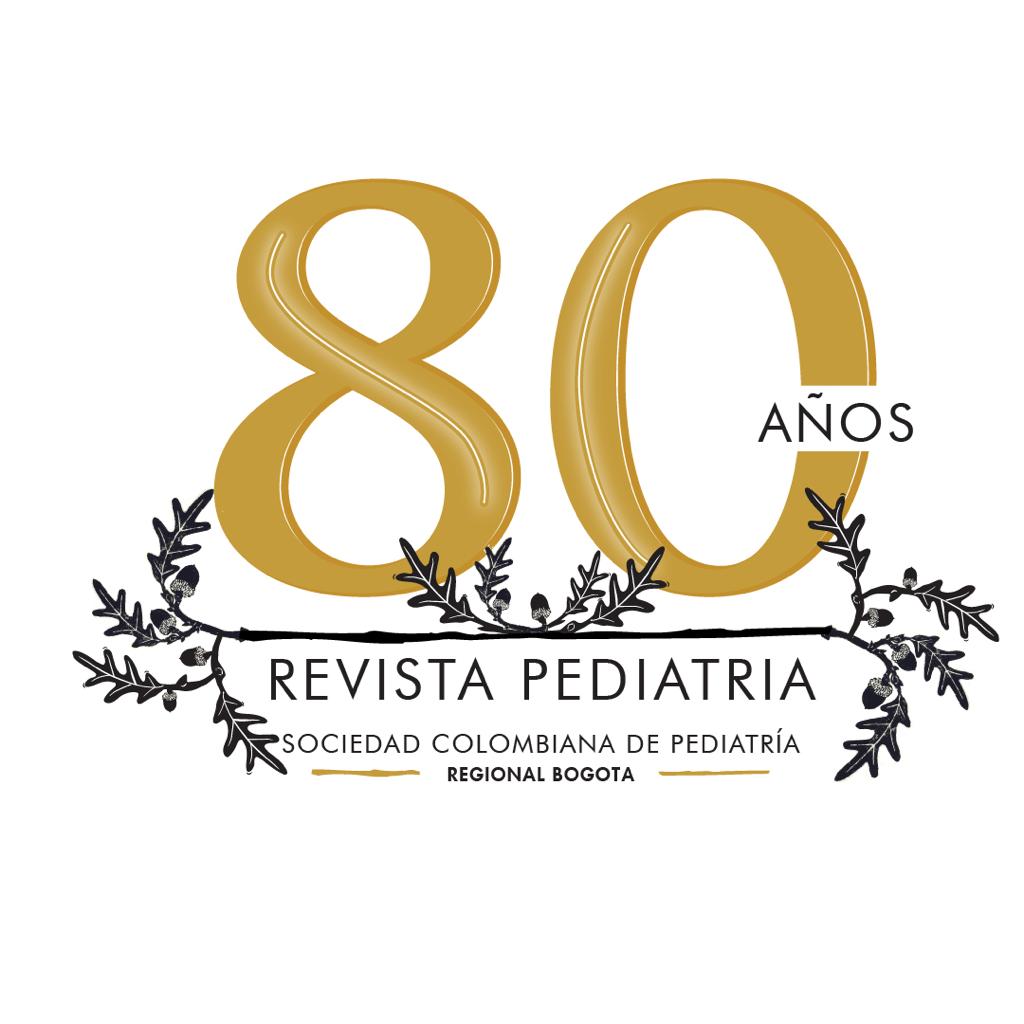La terapia INSURE temprana reduce la falla de CPAP en pretérminos tardíos con Sindrome de dificultad respiratoria La terapia INSURE temprana reduce la falla de CPAP en pretérminos tardíos
Contenido principal del artículo
Resumen
Introducción: La terapia, Intubación, Surfactante y Extubación (INSURE) se considera de uso controversial en los prematuros tardíos con síndrome de dificultad respiratoria (SDR). El objetivo de este estudio es determinar si el uso de INSURE, en prematuros tardíos con SDR, se asocia con mejores desenlaces, al compararlo con pacientes manejados solamente con CPAP. Métodos: Estudio de cohorte retrospectivo que comparó el manejo en dos unidades neonatales de Bucaramanga, Colombia. La primera cohorte utilizó CPAP de burbuja y surfactante, solo en caso de rescate. La segunda cohorte, utilizó CPAP y técnica INSURE en la primera hora de vida. Se incluyeron todos los recién nacidos entre 33 y 366/7 de edad gestacional, nacidos entre 2012 y el 2017, que desarrollaron SDR y fueron tratados con CPAP. Resultados: 208 pacientes fueron incluidos (57 en CPAP y 151 en terapia combinada CPAP + INSURE). La terapia INSURE se asoció con menor riesgo de falla de CPAP (RR = 0.50; IC - 95 % 0.26 - 0.98), este efecto solo fue evidente cuando el surfactante se administraba en las primeras 2 horas de vida (RR = 0.29; IC - 95 % 0.12 - 0.69). INSURE temprana se asoció con un menor riesgo de neumotórax (RR = 0.07; IC – 95 % 0.01 - 0.77) e hipertensión pulmonar (RR = 0.34; IC - 95 % 0.14 - 0.78). Conclusión: La terapia INSURE temprana se asocia con un menor riesgo de falla de CPAP, neumotórax e hipertensión pulmonar en prematuros tardíos con SDR de moderado a severo. Se necesitan ensayos clínicos controlados, aleatorizados, para confirmar estas observaciones, pero su uso esta soportado por estudios con resultados similares en prematuros tardíos.
Descargas
Detalles del artículo

Esta obra está bajo una licencia internacional Creative Commons Atribución-NoComercial-SinDerivadas 4.0.
Licencia Creative Commons
Atribución-NoComercial-CompartirIgual 4.0 Internacional (CC BY-NC-SA 4.0)
Usted es libre de:
Compartir - copiar y redistribuir el material en cualquier medio o formato.
Adaptar - remezclar, transformar y construir a partir del material
La licencia no puede revocar estas libertades en tanto se sigan los términos de la licencia.
- Atribución — Usted debe dar crédito de manera adecuada, brindar un enlace a la licencia, e indicar si se han efectuado cambios. Puede hacerlo en cualquier forma razonable, pero no de forma tal que sugiera que usted o su uso tienen el apoyo del licenciante.
- NoComercial — Usted no puede hacer uso del material con propósitos comerciales.
- CompartirIgual— Si remezcla, transforma o crea a partir del material, debe distribuir su contribución bajo la misma licencia del original.
- No hay restricciones adicionales — No puede aplicar términos legales ni medidas tecnológicas que restrinjan legalmente a otras a hacer cualquier uso permitido por la licencia.
Citas
Rubens CE, Sadovsky Y, Muglia L, Gravett MG, Lackritz E, Gravett C. Prevention of preterm birth: harnessing science to address the global epidemic. Sci Transl Med. 2014;6(262):262sr5
Tielsch JM. Global Incidence of Preterm Birth. Nestle Nutr Inst Workshop Ser. 2015;81:9-15.
Sankar MJ, Gupta N, Jain K, Agarwal R, Paul VK. Efficacy and safety of surfactant replacement therapy for preterm neonates with respiratory distress syndrome in low- and middle-income countries: a systematic review. J Perinatol. 2016;36 Suppl 1:S36-48.
Hellmeyer L, Herz K, Liedtke B, Wohlmuth P, Schmidt S, Hackeloeer BJ. The underestimation of immaturity in late preterm infants. Arch Gynecol Obstet. 2012;286(3):619-26.
Mahoney AD, Jain L. Respiratory disorders in moderately preterm, late preterm, and early term infants. Clin Perinatol. 2013;40(4):665-78.
Consortium on Safe Labor, Hibbard JU, Wilkins I, Sun L, Gregory K, Haberman S, Hoffman M, et al. Respiratory morbidity in late preterm births. JAMA 2010;304:419-25.
Natile M, Ventura ML, Colombo M, Bernasconi D, Locatelli A, Plevani C, Valsecchi MG, et al. Short-term respiratory outcomes in late preterm infants. Ital J Pediatr 2014;40:52.
Sürmeli-Onay O, Korkmaz A, Yiğit S, Yurdakök M. Surfactant therapy in late preterm infants: respiratory distress syndrome and beyond. Turk J Pediatr 2012;54:239-46.
Chioukh FZ, Skalli MI, Laajili H, Ben Hmida H, Ben Ameur K, Bizid M, et al. [Respiratory disorders among late-preterm infants in a neonatal intensive care unit]. Arch Pediatr. 2014;21(2):157-61.
Raju TN, Vidyasagar D, Bhat R, Sobel D, McCulloch KM, Anderson M, et al. Double-blind controlled trial of single-dose treatment with bovine surfactant in severe hyaline membrane disease. Lancet. 1987;1(8534):651-6.
Gortner L, Bernsau U, Hellwege HH, Hieronimi G, Jorch G, Reiter HL. A multicenter randomized controlled clinical trial of bovine surfactant for prevention of respiratory distress syndrome. Lung. 1990;168 Suppl:864-9.
Halliday HL, McClure G, Reid MM, Lappin TR, Meban C, Thomas PS. Controlled trial of artificial surfactant to prevent respiratory distress syndrome. Lancet. 1984;1(8375):476-8.
Rojas MA, Lozano JM, Rojas MX, Laughon M, Bose CL, Rondon MA, et al. Very early surfactant without mandatory ventilation in premature infants treated with early continuous positive airway pressure: a randomized, controlled trial. Pediatrics. 2009;123(1):137-42.
Confounding in health research. Greenland S, Morgenstern H. Annu Rev Public Health. 2001;22:189-212.
Verder H, Albertsen P, Ebbesen F, Greisen G, Robertson B, Bertelsen A, et al. Nasal continuous positive airway pressure and early surfactant therapy for respiratory distress syndrome in newborns of less than 30 weeks' gestation. Pediatrics. 1999;103(2):E24.
Bahadue FL, Soll R. Early versus delayed selective surfactant treatment for neonatal respiratory distress syndrome. Cochrane Database Syst Rev. 2012;11:CD001456.
Dani C, Mosca F, Vento G, Tagliabue P, Picone S, Lista G, et al. Effects of surfactant treatment in late preterm infants with respiratory distress syndrome. J Matern Fetal Neonatal Med. 2018;31(10):1259-1266.
Olivier F, Nadeau S, Bélanger S, Julien AS, Massé E, Ali N, et al. Efficacy of minimally invasive surfactant therapy in moderate and late preterm infants: A multicentre randomized control trial. Paediatr Child Health. 2017;22(3):120-124.
Pérez LA, González DM, Álvarez KM, Díaz-Martínez LA. [Nasal CPAP versus mechanical ventilation in 28 to 32-week preterm infants with early surfactant administration]. Biomedica. 2014;34(4):612-23.





